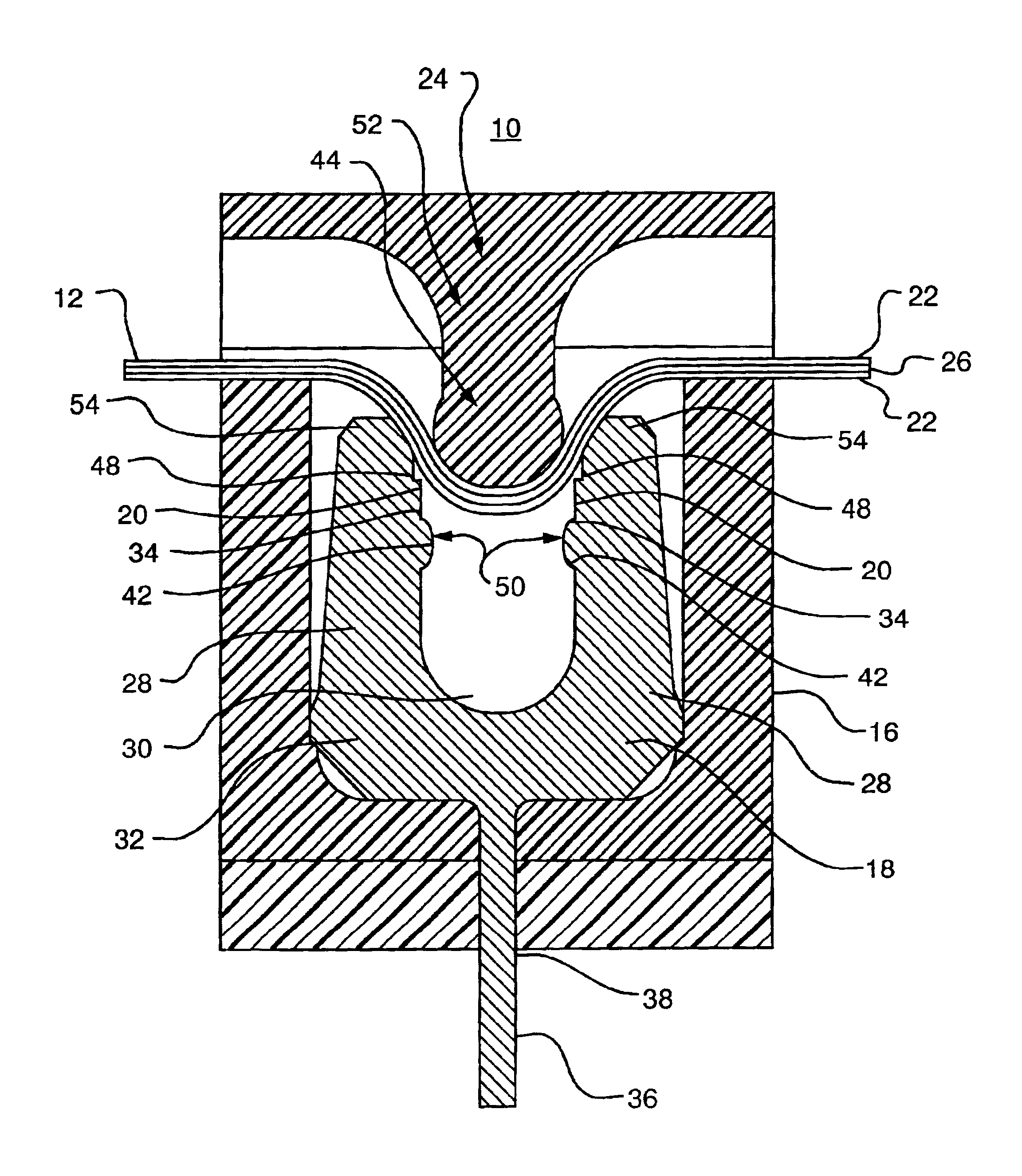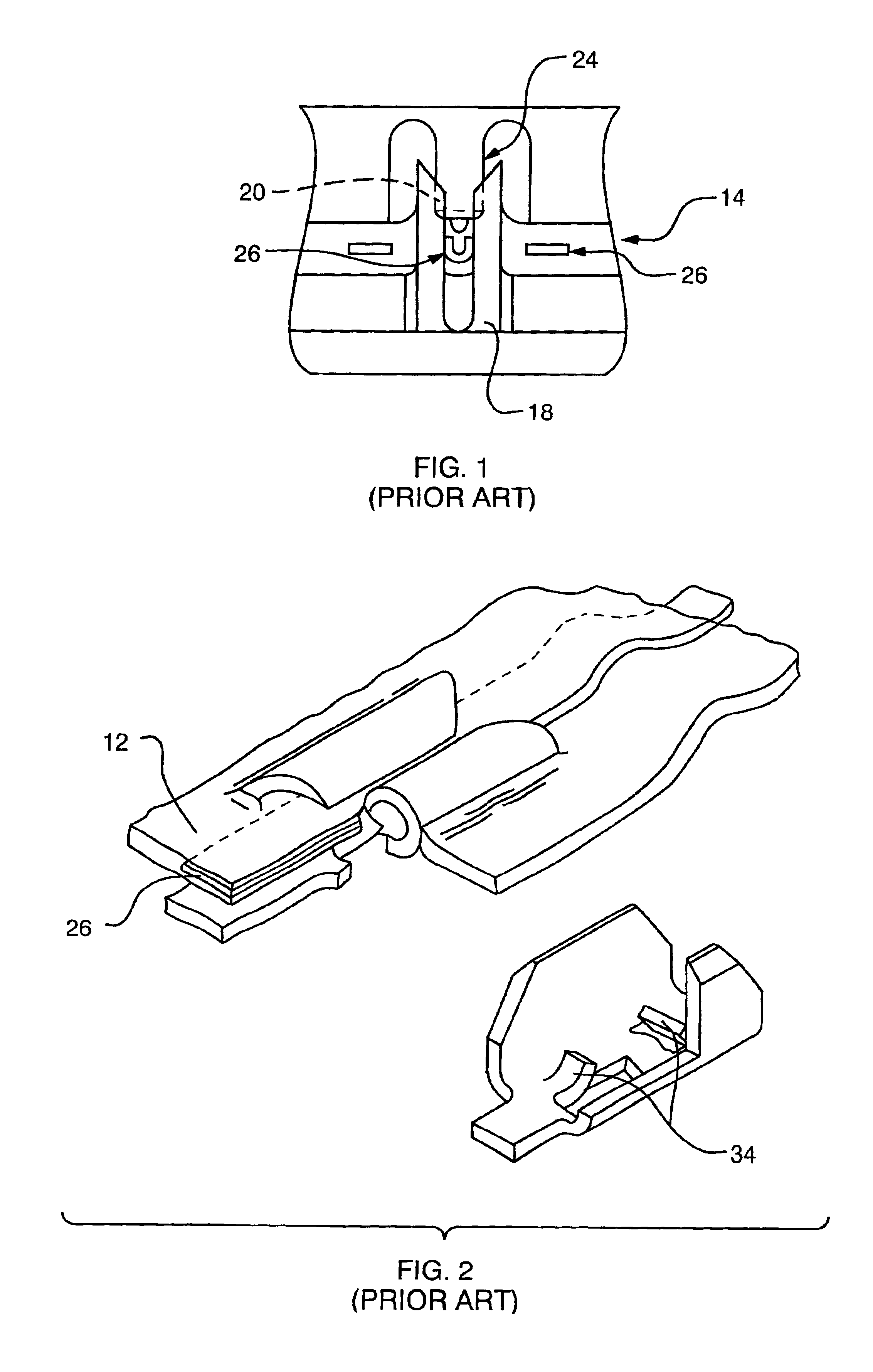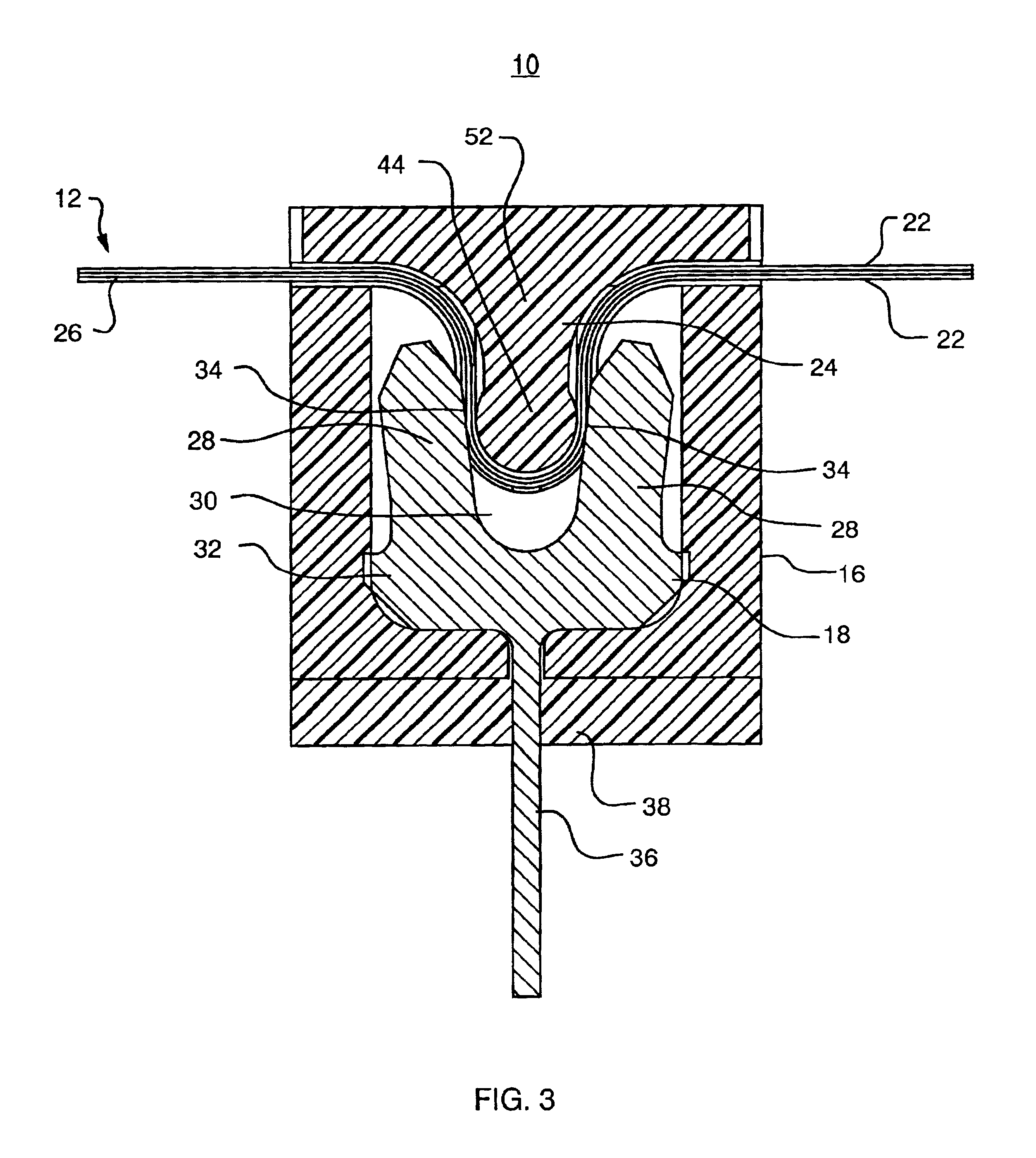Method of connecting multi conductor cable connector
a multi-conductor cable and connector technology, applied in the field of electric connectors, can solve the problems of few applications for this technology for flat conductor cables, low current carrying capacity, and inability to meet the needs of the customer, and achieve the effect of increasing the current carrying capacity
- Summary
- Abstract
- Description
- Claims
- Application Information
AI Technical Summary
Benefits of technology
Problems solved by technology
Method used
Image
Examples
Embodiment Construction
[0042]This invention is an electrical connector 10, shown in FIG. 3, for connecting multi-conductor cable 12. Multi-conductor cable 12 is cable such as flat flexible cable, printed circuits, and similarly constructed cables wherein the cross-section of the conductor 26 has a width dimension 13 greater than the thickness dimension 14. The surface of each conductor 26. The inventive electrical connector 10 has a base 16 for holding multiple contacts 18. The contacts 18 should be positioned substantially in parallel with each other and are located at least partially within the base 16 of the electrical connector 10. Each contact 18 has at least one insulation-displacing surface 34. The insulation-displacing surface 34 is preferably a part of the contact 18 and is oriented to remove insulation 22 from along the width dimension 13 of the conductors 26, described as a width surface 15. The final part of the electrical connector 10, in one of its broadest embodiments, is an actuator 24, in...
PUM
| Property | Measurement | Unit |
|---|---|---|
| depth | aaaaa | aaaaa |
| electrical contact force | aaaaa | aaaaa |
| insulating | aaaaa | aaaaa |
Abstract
Description
Claims
Application Information
 Login to View More
Login to View More - R&D
- Intellectual Property
- Life Sciences
- Materials
- Tech Scout
- Unparalleled Data Quality
- Higher Quality Content
- 60% Fewer Hallucinations
Browse by: Latest US Patents, China's latest patents, Technical Efficacy Thesaurus, Application Domain, Technology Topic, Popular Technical Reports.
© 2025 PatSnap. All rights reserved.Legal|Privacy policy|Modern Slavery Act Transparency Statement|Sitemap|About US| Contact US: help@patsnap.com



